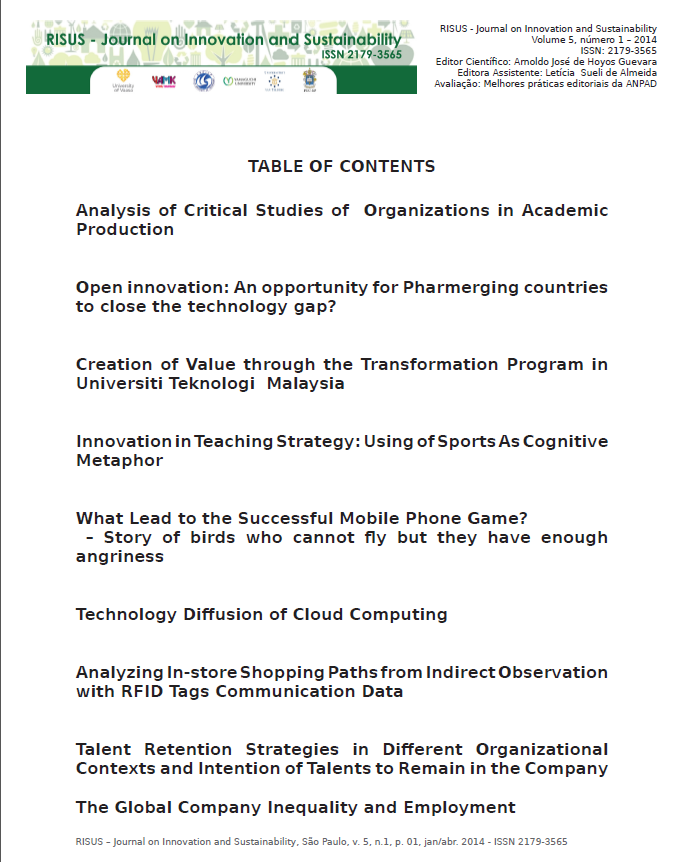Open innovation: An opportunity for Pharmerging countries to close the technology gap?
DOI:
https://doi.org/10.24212/2179-3565.2014v5i1p19-38Palavras-chave:
Pharmaceutical Industry, R&D, Open innovation, ChinaResumo
The pharmaceutical industry is entering a critical phase in its history, with decliningprofits and patent cliffs fallouts awaiting their former blockbuster drugs. Several hypotheseshave been formulated to explain the causes of this downfall whether it is the drought in theirR&D pipelines, the rising competition of generics or the ever-increasingpressure from healthcareproviders such as governments seeking to curb their health expenditures thus causing priceerosion. However, rather than striving to find the root causes of the issues the industry isfacing, the major players in the Pharma field should focus on implementing measures totransform the very structure of the pharmaceutical companies and change the drug discoveryand commercialization processes. These core changes that the pharmaceutical sector has toundergo could be achieved through several methods. One of the most suggested solutions tothis R&D bottleneck could be shifting from the traditional “closed model” towards a new “openinnovation” model based on collaboration of Pharma companies whether it includes workingtogether with a biotech company, CROs, Academia or local Pharma manufacturer. This openinnovation model is believed to foster innovation and invigorate the agonizing R&D Pharmasector as it proved itself to be effective resulting in innovative projects and ideas in the ITsector. It is in this context that this paper will address the opportunity emerging pharmaceuticalmarkets could benefit from when this open innovation model is applied to the pharmaceuticalindustry. Mainly, we will discuss the integration of this strategy within big Pharma companiesin their efforts to enter what is designated as “Pharmerging countries” in general with a specialfocus on one key global health market: China. We will discuss the impact of this innovationstrategy could bring in terms of both tangible and intangible benefits and potential drawbacks.Downloads
Publicado
Edição
Seção
Licença
Esta obra está licenciada sob uma licença Creative Commons Atribuição - No comercial - Sin derivaciones 4.0 Internacional
1.O(s) autor(es) autoriza(m) a publicação do artigo na revista;
2.O(s) autor(es) garante(m) que a contribuição é original e inédita e que não está em processo de avaliação em outra(s) revista(s);
3.A revista não se responsabiliza pelas opiniões, ideias e conceitos emitidos nos textos, por serem de inteira responsabilidade de seu(s) autor(es);
4.É reservado aos editores o direito de proceder ajustes textuais e de adequação do artigos às normas da publicação.
1.1 Copyright Statement
This journal is licensed under a Creative Commons Attribution-Non Commercial-No Derivers 4.0 International license.
1. The author (s) authorize the publication of the article in the journal;
2. The author (s) warrant that the contribution is original and unpublished and is not in the process of being evaluated in other journal (s);
3. The journal is not responsible for the opinions, ideas and concepts emitted in the texts, as they are the sole responsibility of its author (s);
4. The editors are entitled to make textual adjustments and to adapt the articles to the standards of publication.


